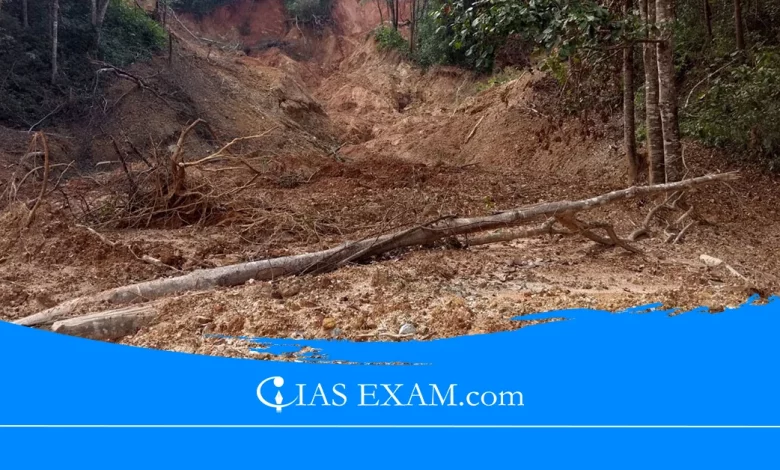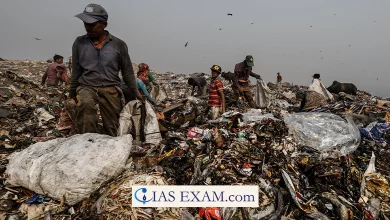Daily Current Affairs for UPSC
Soil Erosion in Western Ghat Region
Syllabus- Environment [GS Paper-3]

Context
A recent study by the IIT Bombay states a staggering 94% increase in soil erosion in the Western Ghats Region from 1990 to 2020.
Increase in Soil Erosion
- The report used remote sensing inputs, such as LANDSAT-8, Digital Elevation Model (DEM), and rainfall records to estimate soil loss rates using the Universal Soil Loss Equation (USLE) method.
- The results indicated that the average soil loss for the Western Ghats Region was 32.3, 46.2, 50.2, and 62.7 tons per hectare per year for the years 1990, 2000, 2010, and 2020, respectively.
- It indicates a concerning 94% increase, and a consistently increasing trend.
- The state-wise increase is highest in Tamil Nadu (121%), followed by Gujarat (119%), Maharashtra (97%), Kerala (90%), Goa (80%), and Karnataka (56%).
- These high rates of increase in soil loss are unsustainable to support the biodiversity of Western Ghats Region and can lead to permanent destruction.
The Impact and the Need for Conservation
- The Western Ghats is home to hundreds of globally threatened flora, fauna, bird, amphibian, reptile, and fish species, and is impacted by urbanisation, agricultural expansion, farm animals grazing, forest loss, habitat fragmentation, habitat degradation by invasive plant species, encroachment, conversion, and climate change.
- The loss of soil not only influences the fertility of the land but also results in a lower in the water-holding capacity of the soil, affecting the overall ecosystem.
- The growing soil erosion is detrimental to the region’s globally important biodiversity.
Conclusion
- The report highlights the importance of thinking about the long-term consequences of land use change on soil erosion and the need for sustainable land management practices.
- The consequences can be used to sensitise government organizations on the need to protect the natural land cover, which will reduce soil erosion.
Western Ghats (the Sahyadri Mountain Range)
-
- It is a UNESCO’s World Heritage Site and one of the World’s 36 biodiversity hotspots, and is recognized as one of the world’s 8 ‘hottest hotspots’ of biological diversity.
- It includes national parks, wildlife sanctuaries, and reserve forests and many others.
- It is spread throughout six Indian states such as Tamil Nadu, Kerala, Karnataka, Goa, Maharashtra, and Gujarat.
- Western Ghats in Gujarat start near the Tapi River.
- Red soils are typically found at the western aspect of the Ghats in which the slopes are steep and the rainfall is high.
- Protection of the Western Ghats:
-
- The Ministry of Environment and Forests (MoEF) constituted Committees:
- Western Ghats Ecology Expert Panel (WGEEP) headed by Prof. Madhav Gadgil.
- High Level Working Group (HLWG) headed by Dr. K. Kasturirangan, to study the suggestions of the WGEEP.
Source: The Hindu
UPSC Mains Practice Question
Q.Discuss the significance of the Western Ghats in the conservation of India’s biodiversity. (150 words)





.png)



